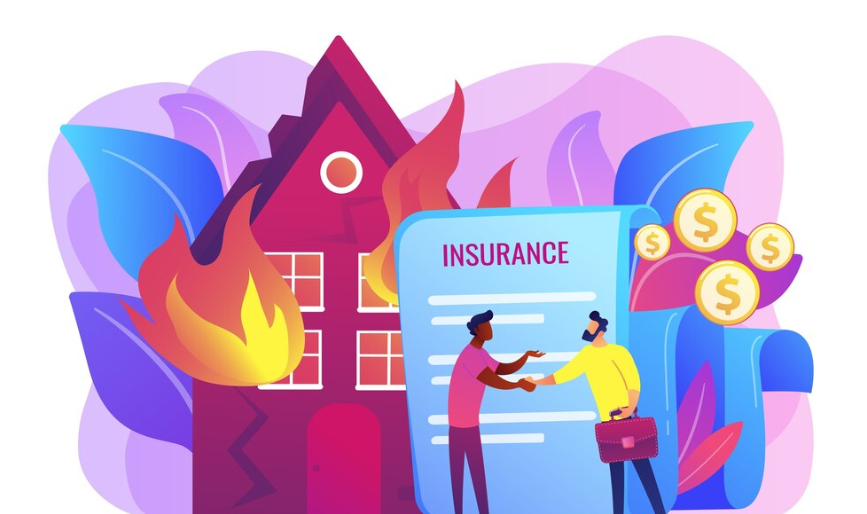Introduction
Natural disasters, including hurricanes, earthquakes, floods, wildfires, and tornadoes, are becoming more frequent and severe due to climate change. These catastrophic events not only devastate communities and disrupt lives but also have a significant impact on insurance premiums. As insurers face higher costs in response to these disasters, they often pass those costs on to policyholders. In this article, we will explore how natural disasters affect insurance premiums, the factors involved, and how individuals can mitigate the financial impact.
1. How Natural Disasters Affect Insurance Premiums
When natural disasters strike, they cause widespread damage to homes, businesses, and infrastructure. Insurance companies, which are responsible for covering these costs, often adjust their premiums to account for the increased risk. The severity and frequency of these events play a critical role in determining how much a policyholder will pay for insurance.
1.1. Increased Risk and Claims Costs
- Higher Frequency of Claims: As natural disasters become more frequent, insurance companies face a larger volume of claims, resulting in significant payouts. For example, a hurricane can cause millions in property damage, leading to a spike in claims from homeowners in affected regions.
- Rising Repair and Replacement Costs: The cost of rebuilding or repairing property after a natural disaster can increase due to higher demand for contractors and materials. Insurers must factor in these rising costs, which can directly affect premiums.
- Reinsurance Costs: Insurance companies purchase reinsurance to protect themselves against large-scale disasters. When these events occur more often, the cost of reinsurance rises, and insurers typically pass those costs on to policyholders.
1.2. Geographic Risk
- High-Risk Areas: People living in areas prone to natural disasters, such as coastal regions vulnerable to hurricanes or flood zones, may experience higher insurance premiums. Insurers assess geographic risk and adjust their pricing accordingly.
- Changes in Underwriting: Insurers may limit coverage in high-risk areas or raise premiums to reflect the increased likelihood of disaster-related claims. In some cases, they may even stop offering certain types of insurance in regions severely impacted by frequent natural disasters.
2. The Types of Insurance Affected by Natural Disasters
Natural disasters can impact various types of insurance, but homeowners, auto, and business insurance are typically the most affected.
2.1. Homeowners Insurance
Homeowners insurance premiums can rise significantly in regions that frequently experience natural disasters. Insurers take into account factors like the risk of wildfires, flooding, earthquakes, and hurricanes. For instance:
- Flood Insurance: In areas prone to flooding, such as near rivers or coastlines, homeowners may be required to purchase separate flood insurance, which is typically more expensive than standard homeowners insurance.
- Hurricane Insurance: In coastal areas, hurricanes pose a significant risk. Homeowners insurance policies in these regions often include additional coverage for wind and storm damage, which can increase premiums.
2.2. Auto Insurance
Natural disasters can also affect auto insurance premiums. Vehicles are vulnerable to damage from floods, wildfires, and hailstorms, leading to increased claims. In areas where these disasters are common, premiums for comprehensive auto insurance may rise.
- Flood Damage: In flood-prone areas, the risk of water damage to cars is high, which may lead to higher premiums for drivers in those areas.
- Wildfire Damage: In regions experiencing frequent wildfires, comprehensive coverage for fire-related damage to vehicles may also increase premiums.
2.3. Business Insurance
Businesses that are located in disaster-prone areas face higher premiums for property, liability, and business interruption insurance. After a major natural disaster, insurers may raise rates to reflect the increased risk of damages and operational disruptions.
- Property Insurance: Businesses in areas affected by hurricanes or earthquakes may face higher premiums to insure their buildings and assets.
- Business Interruption Coverage: If natural disasters result in frequent interruptions to business operations, premiums for business interruption coverage may increase, as insurers need to account for the potential financial losses businesses might suffer.
3. Why Insurance Premiums Rise After Natural Disasters
The increase in premiums after a natural disaster is driven by several factors related to the insurer’s financial stability and the increased risks associated with climate change.
3.1. Increased Claim Payouts
When a natural disaster occurs, insurers often experience a spike in claims. The more claims they process, the more money they pay out in claims settlements. To maintain profitability, insurers raise premiums to recoup these costs.
3.2. Rising Operational and Reinsurance Costs
- Reinsurance: After a significant disaster, reinsurance costs typically rise. Reinsurers are the entities that help primary insurers cover large claims. If natural disasters become more frequent or severe, reinsurers will charge higher premiums to primary insurers, which ultimately leads to higher costs for policyholders.
- Operational Costs: Insurance companies may also incur higher operational costs as they deal with the aftermath of natural disasters. These costs are often passed on to consumers in the form of higher premiums.
3.3. Climate Change and Increased Frequency of Disasters
The effects of climate change, including rising sea levels, increasing temperatures, and changing weather patterns, are causing more frequent and intense natural disasters. As the risk of disasters grows, insurers adjust their pricing to reflect the higher likelihood of claims.
4. How to Manage Rising Insurance Premiums After Natural Disasters
While rising premiums can be frustrating, there are steps you can take to manage the impact of higher insurance costs after natural disasters.
4.1. Review Your Coverage and Adjust Deductibles
- Higher Deductibles: One way to reduce premiums is by increasing your deductible. While this means you’ll pay more out-of-pocket if you need to file a claim, it can significantly lower your monthly premium.
- Reevaluate Coverage Limits: Review your coverage limits to ensure that you’re not overinsured. If you have coverage for risks that are unlikely to affect you, reducing those limits can lower premiums.
4.2. Disaster Preparedness and Risk Mitigation
Investing in disaster preparedness and mitigation measures can help lower your premiums. For example:
- Flood Barriers and Storm Shutters: Installing flood barriers or storm shutters can protect your home from flood and storm damage, reducing the risk of a claim.
- Fire-Resistant Materials: In wildfire-prone areas, using fire-resistant building materials and maintaining defensible space around your property can lower the risk of fire damage.
4.3. Shop Around for Better Rates
If your premiums increase due to a natural disaster, it’s a good idea to shop around for better rates. Different insurers may adjust their pricing differently, and by comparing quotes, you may find more affordable options.
4.4. Take Advantage of Discounts
Many insurance providers offer discounts for policyholders who implement safety measures. These discounts can apply to things like installing security systems, smoke detectors, or fire alarms. Ask your insurer about available discounts to reduce your premiums.
5. Conclusion
Natural disasters have a significant impact on insurance premiums, especially in areas that are prone to events like floods, wildfires, and hurricanes. As insurers face increasing risk and higher claim payouts, they raise premiums to maintain profitability. However, there are ways to manage the financial impact of rising premiums, such as adjusting coverage, increasing deductibles, and investing in risk mitigation measures.
While it’s impossible to control the occurrence of natural disasters, being proactive and taking steps to protect your property and shop for affordable insurance can help you manage the rising costs of coverage. Stay informed, prepare your home for potential disasters, and review your policies regularly to ensure you’re getting the best value for your insurance dollar.

